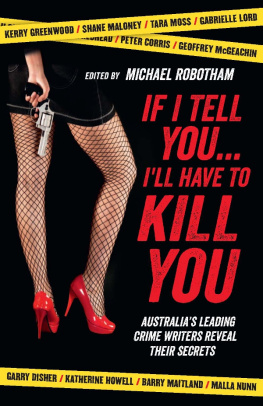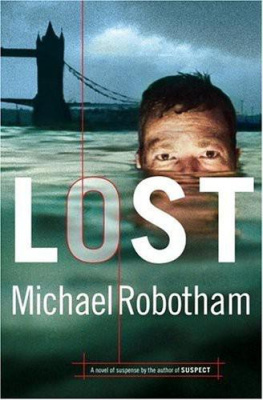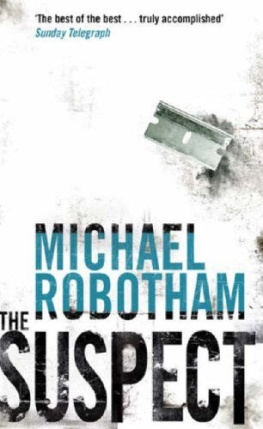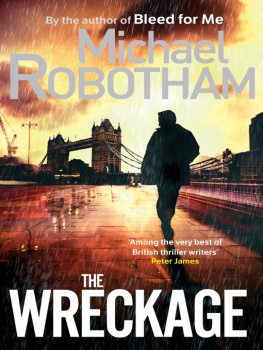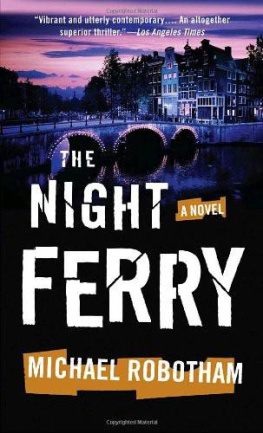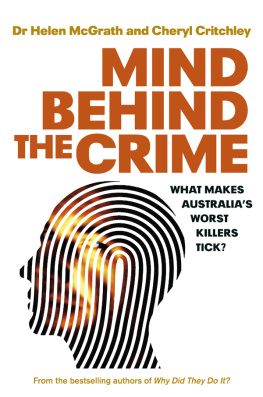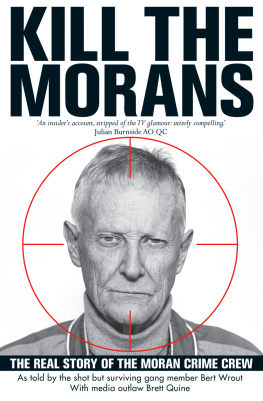
EDITED BY MICHAEL ROBOTHAM
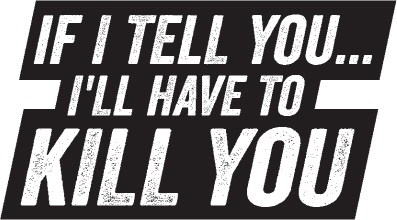
AUSTRALIAS LEADING CRIME WRITERS
REVEAL THEIR SECRETS

First published in 2013
Copyright Michael Robotham 2013
Copyright in individual articles are retained by individual authors
All rights reserved. No part of this book may be reproduced or transmitted in any form or by any means, electronic or mechanical, including photocopying, recording or by any information storage and retrieval system, without prior permission in writing from the publisher. The Australian Copyright Act 1968 (the Act) allows a maximum of one chapter or 10 per cent of this book, whichever is the greater, to be photocopied by any educational institution for its educational purposes provided that the educational institution (or body that administers it) has given a remuneration notice to Copyright Agency Limited (CAL) under the Act.
Allen & Unwin
Sydney, Melbourne, Auckland, London
83 Alexander Street
Crows Nest NSW 2065
Australia
Phone: (61 2) 8425 0100
Email: info@allenandunwin.com
Web: www.allenandunwin.com
Cataloguing-in-Publication details are available
from the National Library of Australia
www.trove.nla.gov.au
ISBN 978 1 74331 348 0
eISBN 978 1 74343 434 5
Internal text design by Squirt Creative
Set in 11.5/16 pt Bembo by Midland Typesetters, Australia
CONTENTS
Michael Robotham
Shane Maloney
Marele Day
Peter Corris
Lenny Bartulin
Liz Porter
Garry Disher
Malla Nunn
Kerry Greenwood
Geoffrey McGeachin
Angela Savage
Leigh Redhead
Barry Maitland
Tara Moss
Adrian Hyland
Leah Giarratano
Michael Robotham
Katherine Howell
Lindy Cameron
Gabrielle Lord
Lindsay Simpson
Peter Lawrance

by Michael Robotham
So you want to know where the bodies are buried. Dont say you werent warned. When you delve into the minds of crime writers you are opening up a stinky stew of psychoses, superstitions, half-finished stories and unplanned homicides.
People often imagine that crime writers would be good at getting away with murder, but I cant even steal a kiss. Or to quote Woody Allen, Im the sort of guy who, if I played baseball, would steal second base, feel guilty and go back. Thats not to say I dont have murderous thoughts. I do... All the time. I contemplated killing the author of Eat Pray Love and then I wanted to kill the person who made it into a movie.
This may seem extreme but Im not alone. In separate studies, two American psychologists, Douglas Kenrick and David Buss, asked people if they had ever fantasised about killing someone. The demographic they chose had exceptionally low rates of violence, yet between seventy and ninety per cent of men and between fifty and eighty per cent of women admitted to having at least one homicidal fantasy in the preceding year.
So theres no point in lying. I know youve daydreamed about slipping rat poison into the bosss coffee or pushing your mother-in-law under a bus. And dont get me started on the neighbour who mows his lawn at 6.30 a.m. every Sunday. Youre dead pal! Just try it next week!
Despite our day jobs, we crime writers are a collegiate, happy-go-lucky bunch. We put our dark thoughts on the page rather than bottling them up inside. Youll appreciate this as you read through these essays, which are written with enormous generosity, insight and humour. From the opening pages when Shane Maloney admits to having killed seventeen people, you will find bodies at every turn, as well as suspects, perpetrators and heroes.
This isnt a book about perfect crimes. It is about imperfect ones. A perfect murder, by its very definition, is one committed by a complete stranger who has never met the victim, has no criminal record, steals nothing and tells no one. For a crime to be truly perfect it can never be detected, which doesnt leave a lot of room for a writer. We need our murders to be imperfect, with grander or baser motives.
Our protagonists are a mixed bunch, ranging from whisky-soaked private eyes to ex-strippers, political fixers, wealthy aristocrats, former models, trembling psychologists, paramedics, pathologists, Aboriginal community police officers, detective inspectors, bikies and amateur sleuths. This is testament to the broad scope of crime writing in Australia, as the gender, jurisdictions and locations constantly change, but the fundamental elements remain: the crime, the investigation, the resolution and the ticking of the clock. It may not be tidy, it may not be nice, it may be bloody miserable, but justice is normally done.
Whether youre a fan of crime fiction or true crime, or a would-be crime writer yourself, youll find laughter, understanding, insight, ideas, advice and hopefully some inspiration in this collection of essays. I was fascinated to read how other writers approach their craft. Some are plotters and some are pantsers (writing by the seat of their pants). Some are pioneers and some are settlers. Some write what they know and others go to extraordinary lengths for the sake of their research, including being strangled to the point of unconsciousness.
After reading these essays I knew these writers better because I learned about the highs and lows, as well as the nuts and bolts of their working lives. Some stumbled into crime writing by accident, while others were raised on the genre being suckled on Chandler, Conan Doyle and Christie. For most of us it began as a passionate hobby and grew into something more. Peter Corris has been writing virtually every day for over thirty years and regards it as something akin to breathingstop it and Id die.
Those of us who read crime fiction and true crime stories appreciate these efforts because we take pleasure in the details and we love seeing the patterns behind the details. Fierce mental energy is needed to expose the lies and resolve the contradictions, to pull off the false beards, to interrogate witnesses and interpret the evidence. We also know that most modern crime stories are more than just mysteries. They are laden with insights about people, environments, politics, the law and much more. One week we can be on the mean streets of Chicago with Sara Paretsky or in Marthas Vineyard with Philip Craig or in Venice with Donna Leon and Sweden with Henning Mankell.
Crime stories allow us to escape from our daily lives and provide us with the reassurance that we can cope with our daily lives. They show us the best and worst of human nature and allow us to question how we would react in similar circumstances. Author Sue Grafton summed it up when she said: A crime story is more than a novel, more than a compelling account of people whose fate engages us. The mystery is a means by which we can explore, vicariously, the perplexing questions of crime, guilt and innocence, violence and justice.
So consider yourself warned before you begin digging up the bodies. Our secrets are now yours. And remember what Stephen King said when asked why he wrote about such gruesome subjects. Why do you assume that I have a choice?
Next page
